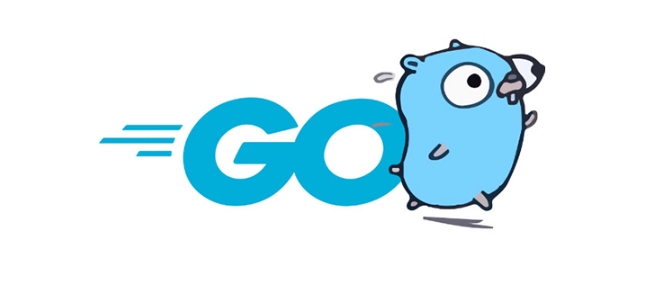Learning the design model is to solve practical problems in enterprise-level development and improve code structure, maintainability and scalability. 1. Use interface abstract behavior, such as defining the Repository interface to achieve database access layer decoupling, making testing easier, switching implementation more convenient, and reducing module dependence; 2. Use Option mode to configure complex objects, and flexibly set through function options construction, such as dynamically adding timeouts, proxy and other configurations when creating HTTP clients; 3. Use decorator mode to enhance functions without modifying the original logic, such as adding logs, monitoring and other functions through middleware decorators, which are suitable for Web frameworks and RPC services.

Learning design models, especially the Go design models for enterprise-level development, is not to show off skills, but to solve practical problems. In large systems, code structure, maintainability and scalability are very important, and the design pattern is a set of effective solutions summarized by predecessors.

The following aspects are the most common and useful design model ideas I encounter when writing enterprise-level projects using Go.
Use interfaces to abstract behavior and decouple core logic
The Go interface is lightweight, but powerful. Especially in enterprise applications, it is often necessary to separate business logic and specific implementation. For example, in the database access layer, we usually define a Repository interface and then implement it according to different data sources (MySQL, PostgreSQL, Mock).

The benefits of doing this are obvious:
- Testing is easier: Mock can be injected
- Switching implementation is more convenient: For example, if you change from MySQL to MongoDB, just change the implementation, and do not change the caller.
- Reduce inter-module dependencies: The caller only relies on the interface and does not care about the specific type
For example, you might write a UserRepository interface that contains GetByID(id string) (*User, error) method, and then use different implementations in different environments.

Configure complex objects using Option mode
When building objects with many configuration items, it is easy to become confusing to directly pass multiple parameters or use the struct initializer. At this time, you can use the "Option mode", that is, through a series of function options to construct the object.
For example, if we want to create an HTTP client, there may be options such as timeout, number of retries, proxy settings, etc. If you use Option mode, you can write this:
type ClientOption func(*Client)
func WithTimeout(d time.Duration) ClientOption {
return func(c *Client) {
c.timeout = d
}
}
func NewClient(options ...ClientOption) *Client {
c := &Client{
timeout: 5 * time.Second,
// Other default values...
}
for _, opt := range options {
opt(c)
}
Return c
}This makes it very flexible when calling:
client := NewClient(WithTimeout(10*time.Second), WithProxy("http://proxy.local"))This method is very common in enterprise-level libraries, for example, many open source projects use this method to handle configuration.
Use the decorator mode to enhance functions without modifying the original logic
Sometimes we need to add some general functions without changing the original functions or methods, such as logging, monitoring, permission checking, etc. At this time, you can consider using the Decorator mode.
Go's function is a first-class citizen, so it is very natural to implement. For example, we can write a middleware decorator and do some things before and after executing a handler:
func WithLogging(fn http.HandlerFunc) http.HandlerFunc {
return func(w http.ResponseWriter, r *http.Request) {
log.Printf("Handling request: %s", r.URL.Path)
fn(w, r)
log.Printf("Finished handling: %s", r.URL.Path)
}
}Then when registering the route, you can wrap it:
http.HandleFunc("/user", WithLogging(userHandler))This approach is very practical in web frameworks and RPC services, and can make your function extension cleaner.
Basically that's it. Go's design pattern does not have a complete set of standard writing methods like Java, but it is more about solving problems with language features. After understanding these common patterns, you will find that the code you write is easier to maintain and more suitable for teamwork.
The above is the detailed content of Go Design Patterns for Enterprise Solutions. For more information, please follow other related articles on the PHP Chinese website!

Hot AI Tools

Undress AI Tool
Undress images for free

Undresser.AI Undress
AI-powered app for creating realistic nude photos

AI Clothes Remover
Online AI tool for removing clothes from photos.

Clothoff.io
AI clothes remover

Video Face Swap
Swap faces in any video effortlessly with our completely free AI face swap tool!

Hot Article

Hot Tools

Notepad++7.3.1
Easy-to-use and free code editor

SublimeText3 Chinese version
Chinese version, very easy to use

Zend Studio 13.0.1
Powerful PHP integrated development environment

Dreamweaver CS6
Visual web development tools

SublimeText3 Mac version
God-level code editing software (SublimeText3)

Hot Topics
 How do I create a buffered channel in Go? (e.g., make(chan int, 10))
Jun 20, 2025 am 01:07 AM
How do I create a buffered channel in Go? (e.g., make(chan int, 10))
Jun 20, 2025 am 01:07 AM
To create a buffer channel in Go, just specify the capacity parameters in the make function. The buffer channel allows the sending operation to temporarily store data when there is no receiver, as long as the specified capacity is not exceeded. For example, ch:=make(chanint,10) creates a buffer channel that can store up to 10 integer values; unlike unbuffered channels, data will not be blocked immediately when sending, but the data will be temporarily stored in the buffer until it is taken away by the receiver; when using it, please note: 1. The capacity setting should be reasonable to avoid memory waste or frequent blocking; 2. The buffer needs to prevent memory problems from being accumulated indefinitely in the buffer; 3. The signal can be passed by the chanstruct{} type to save resources; common scenarios include controlling the number of concurrency, producer-consumer models and differentiation
 How do I call a method on a struct instance in Go?
Jun 24, 2025 pm 03:17 PM
How do I call a method on a struct instance in Go?
Jun 24, 2025 pm 03:17 PM
In Go language, calling a structure method requires first defining the structure and the method that binds the receiver, and accessing it using a point number. After defining the structure Rectangle, the method can be declared through the value receiver or the pointer receiver; 1. Use the value receiver such as func(rRectangle)Area()int and directly call it through rect.Area(); 2. If you need to modify the structure, use the pointer receiver such as func(r*Rectangle)SetWidth(...), and Go will automatically handle the conversion of pointers and values; 3. When embedding the structure, the method of embedded structure will be improved, and it can be called directly through the outer structure; 4. Go does not need to force use getter/setter,
 What are interfaces in Go, and how do I define them?
Jun 22, 2025 pm 03:41 PM
What are interfaces in Go, and how do I define them?
Jun 22, 2025 pm 03:41 PM
In Go, an interface is a type that defines behavior without specifying implementation. An interface consists of method signatures, and any type that implements these methods automatically satisfy the interface. For example, if you define a Speaker interface that contains the Speak() method, all types that implement the method can be considered Speaker. Interfaces are suitable for writing common functions, abstract implementation details, and using mock objects in testing. Defining an interface uses the interface keyword and lists method signatures, without explicitly declaring the type to implement the interface. Common use cases include logs, formatting, abstractions of different databases or services, and notification systems. For example, both Dog and Robot types can implement Speak methods and pass them to the same Anno
 Strategies for Integrating Golang Services with Existing Python Infrastructure
Jul 02, 2025 pm 04:39 PM
Strategies for Integrating Golang Services with Existing Python Infrastructure
Jul 02, 2025 pm 04:39 PM
TointegrateGolangserviceswithexistingPythoninfrastructure,useRESTAPIsorgRPCforinter-servicecommunication,allowingGoandPythonappstointeractseamlesslythroughstandardizedprotocols.1.UseRESTAPIs(viaframeworkslikeGininGoandFlaskinPython)orgRPC(withProtoco
 How do I use string functions from the strings package in Go? (e.g., len(), strings.Contains(), strings.Index(), strings.ReplaceAll())
Jun 20, 2025 am 01:06 AM
How do I use string functions from the strings package in Go? (e.g., len(), strings.Contains(), strings.Index(), strings.ReplaceAll())
Jun 20, 2025 am 01:06 AM
In Go language, string operations are mainly implemented through strings package and built-in functions. 1.strings.Contains() is used to determine whether a string contains a substring and returns a Boolean value; 2.strings.Index() can find the location where the substring appears for the first time, and if it does not exist, it returns -1; 3.strings.ReplaceAll() can replace all matching substrings, and can also control the number of replacements through strings.Replace(); 4.len() function is used to obtain the length of the bytes of the string, but when processing Unicode, you need to pay attention to the difference between characters and bytes. These functions are often used in scenarios such as data filtering, text parsing, and string processing.
 How do I use the io package to work with input and output streams in Go?
Jun 20, 2025 am 11:25 AM
How do I use the io package to work with input and output streams in Go?
Jun 20, 2025 am 11:25 AM
TheGoiopackageprovidesinterfaceslikeReaderandWritertohandleI/Ooperationsuniformlyacrosssources.1.io.Reader'sReadmethodenablesreadingfromvarioussourcessuchasfilesorHTTPresponses.2.io.Writer'sWritemethodfacilitateswritingtodestinationslikestandardoutpu
 How do I use the time package to work with time and durations in Go?
Jun 23, 2025 pm 11:21 PM
How do I use the time package to work with time and durations in Go?
Jun 23, 2025 pm 11:21 PM
Go's time package provides functions for processing time and duration, including obtaining the current time, formatting date, calculating time difference, processing time zone, scheduling and sleeping operations. To get the current time, use time.Now() to get the Time structure, and you can extract specific time information through Year(), Month(), Day() and other methods; use Format("2006-01-0215:04:05") to format the time string; when calculating the time difference, use Sub() or Since() to obtain the Duration object, and then convert it into the corresponding unit through Seconds(), Minutes(), and Hours();
 How do I use if statements to execute code based on conditions in Go?
Jun 23, 2025 pm 07:02 PM
How do I use if statements to execute code based on conditions in Go?
Jun 23, 2025 pm 07:02 PM
InGo,ifstatementsexecutecodebasedonconditions.1.Basicstructurerunsablockifaconditionistrue,e.g.,ifx>10{...}.2.Elseclausehandlesfalseconditions,e.g.,else{...}.3.Elseifchainsmultipleconditions,e.g.,elseifx==10{...}.4.Variableinitializationinsideif,l






